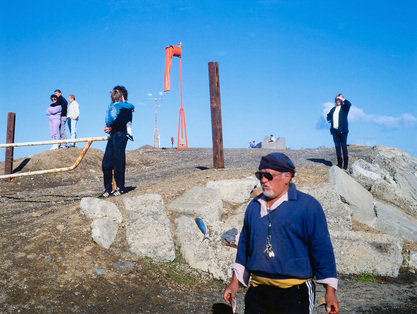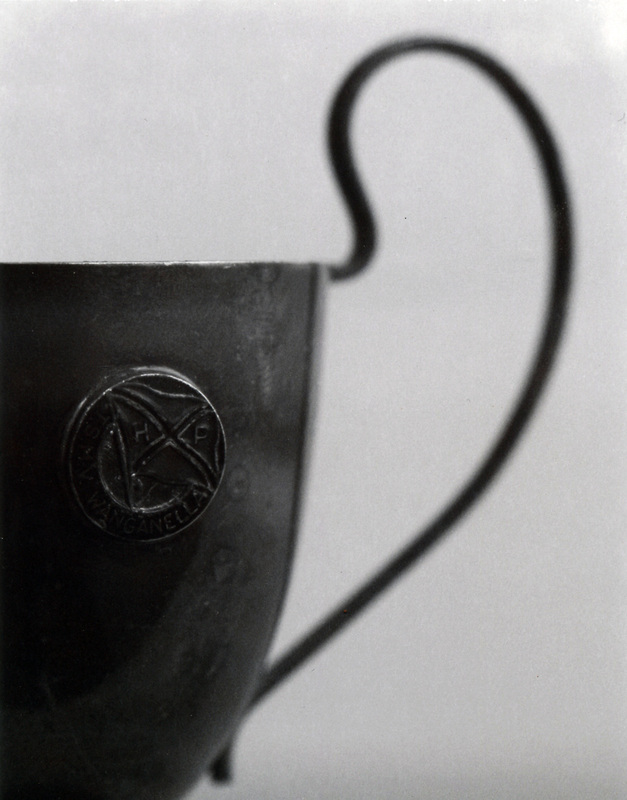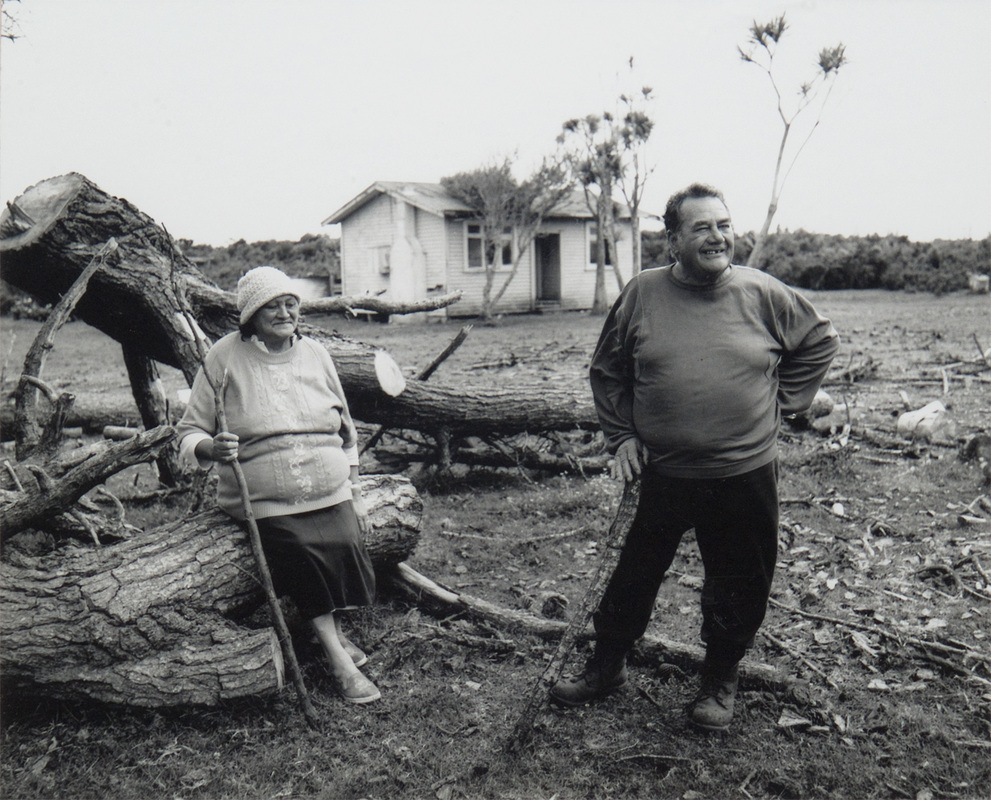|
This photo was included in the exhibition WGTN3 at Photospace Gallery in August 2000, which featured Wellington photographers Alan Wylde, Roland Idaczyk and Derek Smith. Derek had been working as a postie, and he always carried his camera on his run.
The photo was taken at the south end of the runway at Wellington Airport. At the time there was an area of reclaimed land, across the road from the end of the runway, where people would visit to experience the thrill of aircraft passing overhead at very low altitude. The runway has since been extended and the road runs through a tunnel under it; but if the patch of land still existed there would no doubt be a security fence around it to keep people from potential harm. Things have changed quite a lot in the past decade or so. This, by the way, is what Wellingtonians did for amusement before everyone had smartphones. As for the general discussion about photography that usually ensues at this point - well, I'll keep it short this week because the blog's late and there's much to do ahead of the gallery's 15th birthday. Suffice to say; there are two main directions from which to approach photography: assemble stuff from scratch and take a photo of it; or walk around and find existing stuff to photograph. Both approaches have long traditions dating from the beginnings of photography. The second approach (Derek's) begs the question; is it art, or just photography? I know the debate has been had, but mostly just within academia and art circles: it remains an issue in the wider arena. The first approach sidesteps this issue pretty effectively; of course it's art. What else could it be? Next week's photo will be an example of this first approach (unless I change my mind about the selection).
0 Comments
Despite many people visiting the Photospace Gallery for the first time (often because they've come upstairs for a passport photo) assuming all of the photos in the exhibitions were taken by me, the vast majority have not been. But here's one that was. Actually, it's still up in the office, lurking by the door through to the stockroom (which is also where I take the passport photos).
This was from the first series of Trophies, all shot on the 4"x5" studio camera (first time it'd been out of its box for a while, and the last time, as it happens). It was part of the group show VII, in March-April 2010. Trophies, series II was photographed on medium format film and exhibited in 2013. A third series is planned, as a fresh stock of minor trophies, sourced from opp shops and elsewhere, is accumulating. In all cases, I've wanted to keep the photography as straightforward as possible; just daylight from a window, and a reflector on the opposite side. This, and indulging in the pleasure of shooting film and using the darkroom, have made it feel different to and separate from my actual photographic work (which is mostly done from behind a digital camera and a computer). So when people ask, Is this your work? it's tempting to say No, I just made it for fun. But that's not the greatest sales pitch. Or is it? I purchased this photograph from a second hand shop because I immediately fell in love with it. It wasn't expensive. The couple (assuming they are) seem to be engaged with someone standing off to the side while the photographer skirts around, composes and captures the moment. It could perhaps be somewhere up in Northland or the East Cape. I remember seeing the touring exhibition of the Seresin family photography collection a few years ago, which comprised three-dozen or so photographs of high calibre and quality by a range of famous international photographers and (I think) some fine NZ ones. There were two images in the show labelled 'photographer unknown', and I liked very much that the prints were collected and included because of their extraordinary beauty, not because of who made them or how much money they were worth. So, is it important who took the photo? Guess that's a 'well, yes and no' question. Of course an image by a well known photographer will have a higher dollar value than an unidentified one. More crucially, though, it is generally important when reading a photograph to know who took it. For example, many a camera club photographer has considered a drunk asleep on a bench fair game for a shot (while hoping that he doesn't wake up during it); but when, say, Peter Black photographs a street person, perhaps even in a similar circumstance, it's a totally different case. Such photos are throughout his recent book I loved you the moment I saw you (Books page - scroll down a bit). Authorship matters because it affects the reading of the photograph, as does the context (and sequence) in which the photo appears. More on this at a later date. This week's photo hasn't been connected with any particular project, and it was found alone in the shop - not part of a collection. So, it doesn't really matter to me that I don't know who the photographer was, but I'd like to know anyway. That information would change my relationship with the photograph, though not necessarily for the better. What can't be easily seen in this online version is the quality of the image. It was shot on medium format film, definitely not 35mm. The print is in perfect condition and was made by a highly competent printer. I would like to hear from anyone who can positively identify the people in the photo, and/or the photographer, and also who the probable third party might be. (Not interested in pure guesswork, though.) Link: Press release for Seresin Collection exhibition, Auckland Museum, 2007.
|
AuthorPhotography Matters II Categories |




 RSS Feed
RSS Feed
